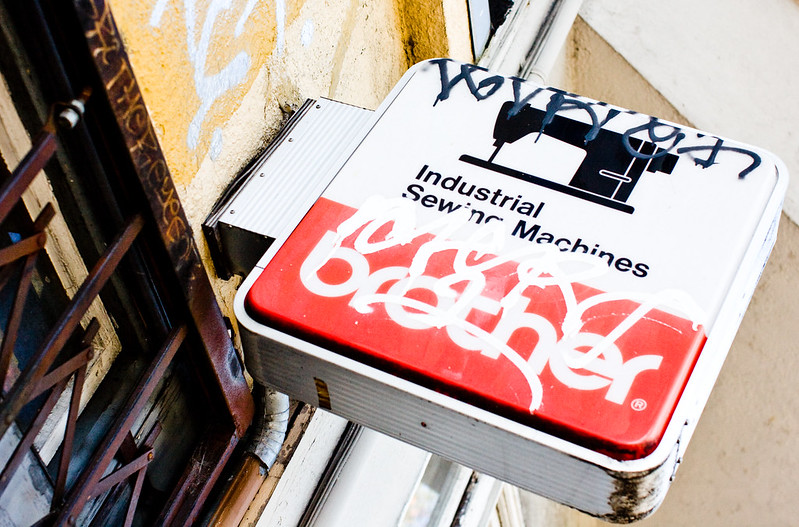
Gov. Gavin Newsom signed the Garment Worker Protection Act into law on Monday.
The minimum wage in California is $14. That’s good. But the average rate of pay for workers in the sprawling Los Angeles garment industry is likely closer to $5.15. In Los Angeles, a famously expensive place. That’s bad.
That $5.15 estimate is according to a 2020 report from the Garment Workers Center, and is made possible by the garment industry’s piece rate rule in the state – which means garment workers can be paid not an hourly wage but by piece produced. So many of the 45,000 California workers sewing together American-made hoodies, or jeans, or blouses or T-shirts often have to absolutely hoof it over long hours just to scratch the minimum wage.
But no longer, because a new state law has just changed that. It’s called the Garment Worker Protection Act, and after dying in the General Assembly last year, this time around it cleared both chambers and was signed into law on Tuesday.
This bill eliminates that per piece pay rate in favor of hourly pay, and also installs legal accountability for brands that contract manufacturing to third-party companies, who advocates say threaten workers with deportation to keep them from agitating for better working conditions, and relocate shops to avoid workplace regulation. Last year a COVID-shortened legislative session and business lobbies managed to kill the bill.
But this year, the Garment Worker Protection Act, championed again by Democratic Sen. María Elena Durazo, made it to Gov. Gavin Newsom’s desk. Here’s the Washington Post:
The California Chamber of Commerce objected that the measure “places enormous burdens on employers in the clothing industry,” including those that don’t directly oversee the workers but will now be liable for their mistreatment. It predicted the law will put some employers out of business or cause them to move out of California.
The advocacy group Legal Aid at Work, which supported the bill, said the broad liability under the law is necessary to “prevent bad-actor brands from obviating oversight and enforcement by layering contracts.”
The 2021 iteration was again not without its critics, and the lobbies again cited the brand liability thing as the reason why. One guy wrote in Forbes that labor “is already an outsized cost component as companies try to stay competitive in the global marketplace” and that “companies are just averse to being held liable for any situation they cannot control.”
But there are plenty of businesses within the industry that supported the bill, saying it will level the playing field for companies that pay their employees a decent wage. And it’s the brands that control the pricing; not the other way around. Elizabeth Cline (author of Overdressed: The Shockingly High Cost of Cheap Fashion), in another Forbes opinion (it’s a Forbes fight!) pointed out:
A U.S. Department of Labor investigation found that brands’ low prices are what’s driving L.A.’s endemic sweatshop conditions. Research has established time and again that big brands in particular control the pricing, pace of production, sustainability and social compliance, the human rights outcomes, and most importantly, worker pay in factories.
Is this bill going to cost the industry more? Well, probably; difficult things like wages do affect one’s bottom line. But this is a question of fairness. And this new legislation in California — the first of its kind in the United States — answers that question. Congratulations to the Golden State for improving the pay for thousands of workers in the American garment industry.
